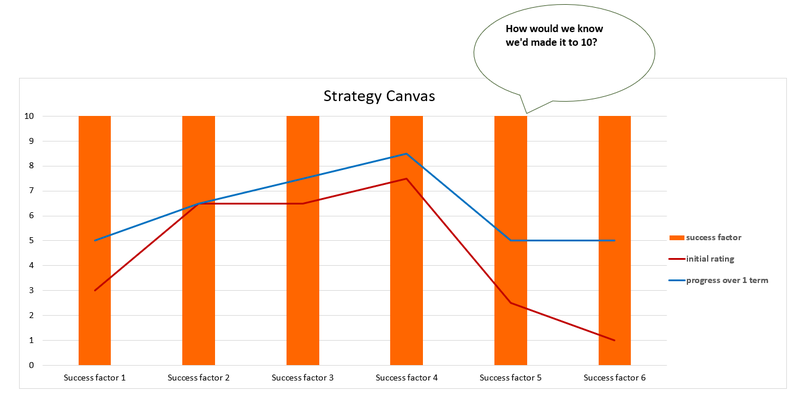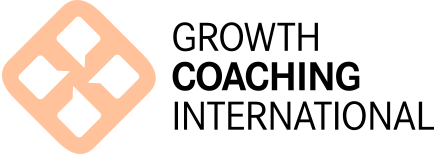Mind the Gap
By John Campbell and Jason Pascoe
The Knowing-Doing Gap (Pfeffer & Sutton, 2000) is a well-established phenomenon. We know what we should do, but there is often a gap between that intention and the implementation of those intentions. A range of factors can impact upon this gap – not knowing where to start on a big issue; the sheer busyness of life; the shifting nature of priorities… a whole host of things really.
Similar challenges arise when school leaders begin to plan for any change in their school context. It can be a challenge to move from an understanding of what’s wanted to actually implementing in a comprehensive and coherent way for all involved.
Recently, the team at Growth Coaching International has had considerable success using a Solution Focused Strategy Canvas Approach (Shariff & Abington, 2010) to help school leadership teams work through these challenges and establish effective implementation plans. The approach is based on the Solutions Focus principles articulated by Paul Jackson and Mark McKergow (Jackson & McKergow, 2007). In their simplest form, Solutions Focus theories and practices involve exploring: What’s Wanted? What’s Already Working? and What’s Next?
The key components of the Strategy Canvas approach include:
- The shift: From problem-focused planning to solution building
- Building a platform, not a vision: Establishing outcomes for the planning process
- Bringing others into the strategy: Multiple perspectives fit the facts
- Creating the narrative of the plan: So, what’s the story?
- Key success factors: Painting your canvas
- Scaling your success factors: Looking for resources
- Moving to action: Small steps
Let’s consider each of these components in turn…
The shift
Introducing participants to the Solutions Focused (SF) approach and the practical, generative nature of SF conversations is essential to the success of this strategy. The purpose here is to demystify the approach and give participants the experience of taking a Solutions Focus perspective. This also helps to ‘shift’ their mindset away from our default pessimism bias that tends to see us focus on what’s not working first.
This shift in perspective can be accelerated with a couple of simple questioning and listening exercises. These exercises allow people to explore the difference between problem focused questions and solution focused questions, and help them to listen for strengths and resources. This listening activity emphasises the value of the experience and perspective that each person brings to the conversation. Participants are now much more ready and open to take a positive future-focused stance.
Some key questions at this stage:
- What are your best hopes from this process?
- Suppose you get your best hopes, what will you walk away with?
- How do we have to ‘be’ together to make sure this happens?
Building a platform, not a vision
Traditional approaches to planning often involve vision and mission statements. The Strategy Canvas approach begins with establishing a platform for action, inviting clarity around what’s wanted and calling for commitment to follow through on the steps and actions that will emerge. Questions around participants ‘best hopes’ for their organisation begin to lead the conversation into a creative space that is beyond function and linked more to purpose.
Some key questions at this stage:
- What are your best hopes for your school?
- How will we know this is happening?
- Who will be involved? How?
Bringing other perspectives into the strategy
The principle that guides this part of the process is that strategy needs to be defined in terms of value delivered to stakeholders. In educational settings these include;
- Staff
- Students
- Parents
- The wider community
- System leaders, for example School Directors, Council Members and Governors
This allows people to communicate success so that everyone knows what it means to succeed. Simply, what does our success look like to our stakeholders? With these details a picture of the group’s preferred future emerges, not only from the multiple perspectives of the participants but from the perspectives of the various stakeholders. It is important that this preferred future is outlined in specific detail. This helps to engender hope in the possibility of a bright and vibrant future.
Some key questions at this stage:
- What does our strategic success look like to our stakeholders?
- What will they be saying? Doing? Noticing?
- In what ways will our interactions be better?
Creating the narrative: so what’s the story
At this point establishing the narrative of success is important. When participants leave the room it is not only important to put their plans into action but also to stay ‘on message’ in multiple forums, especially with stakeholders. A useful question to ask at this stage is, “what will be the benefit of achieving this?” and then recording the answers. It helps then to explore each response further by asking, “and what is the benefit of that?” (perhaps several times) to extract the story and find a common ground for the team message. Changing the question to “and what will be the benefit of that for staff?” begins to create a story from, and for, multiple perspectives. Participants share their stories and the message is refined as these stories unfold.
“If a story is not about the hearer he [or she] will not listen . . . A great lasting story is about everyone or it will not last.” John Steinbeck
Some key questions at this stage:
- What is the common ground in the stories you heard?
- What do our stakeholders need to hear?
- What are our opportunities to tell our story?
- How will this add value to our school?
Key success factors
This stage involves gaining agreement on five to eight high-level objectives that must be delivered to have any chance of strategic success. Depending on the ‘platform’, some examples might be: increased leadership opportunities; more student voice; greater parent engagement; or improved Principal wellbeing. These are explored by asking questions such as:
- Are these sufficient?
- Are they all necessary?
- Will these be enough to guarantee our success?
Once agreed, a one page ‘canvas’ is designed. The vertical axis is the scale (1 to 10) and the horizontal axis contains the key success factors. Part of the aim here is to produce a visual that can be quickly communicated within and beyond the group. The canvas is a way of creating a common language and shared vision of success across the team and the wider school community.

Some key questions at this stage:
- Are these collectively sufficient to enable success?
- Which will have the best impact?
- Which 1-3 key success factors will we make our focus for the next 6-12 months?
Scaling your success factors: Looking for resources
Solution Focused scales are now applied to each key success factor. On a scale of one to ten, each factor is described in detail at its best, becoming the description of a 10. Each factor is then rated by asking “where are we now on the scale?” It is the next question that helps the conversation move toward consensus, “what gets your score that high and not lower?”
Articulating what’s working already, utilizes the perspectives in the room to build a picture of the resources the team has at their disposal to support the key success factors. This is a critical point of difference between the Solutions Focused Strategy Canvas approach and many other planning processes.
Some key questions at this stage:
- On a scale of 1-10 (10 being the best) how would we know we’d made it to 10?
- Where is good enough? For us, for others
- What will be the signs of progress 3, 6, 12 months from now?
- How will we know that we’ve made it 1 point up the scale?
Moving to action: small steps
Moving forward, the team is encouraged to describe how they would know they had moved one point up each scale. This incremental movement allows the team to communicate what would be happening and to set up proximal goals across the team. Moving to action involves communicating how we will know we are on the right track toward the next point and what needs to happen in the next few weeks to make sure we are on track.
Some key questions at this stage:
- Over the next two weeks, how will we know we are moving towards 1 point up the scale?
- Who else will notice?
- What will they notice?
Some of the challenges with planning processes are that they are often time consuming, cumbersome, involve just a few people, and are poorly implemented, or even totally forgotten or ignored once the document has been completed. The Strategy Canvas approach is fast, energising, can involve a large group, and moves forward via small step implementation helping to translate good intentions into great results.
Based on original article in Coaching at Work: Special Report (May/June 2015, Vol 10:3, pp. 38-41)
References:
- Pfeffer, J. & Sutton, R. (2000). The knowing-doing gap: How smart companies turn knowledge in action. Cambridge, MA: Harvard Business School Press.
- Jackson, P. & McKergow, M. (2007). The Solutions Focus: Making change SIMPLE. London: Nicholas Brealey
- Shariff, A. & Abington, A. (2010). Solution focused strategy canvassing: An approach to enabling collective effort in making strategy happen. In InterAction Vol, 2(1) pp.100-112.

